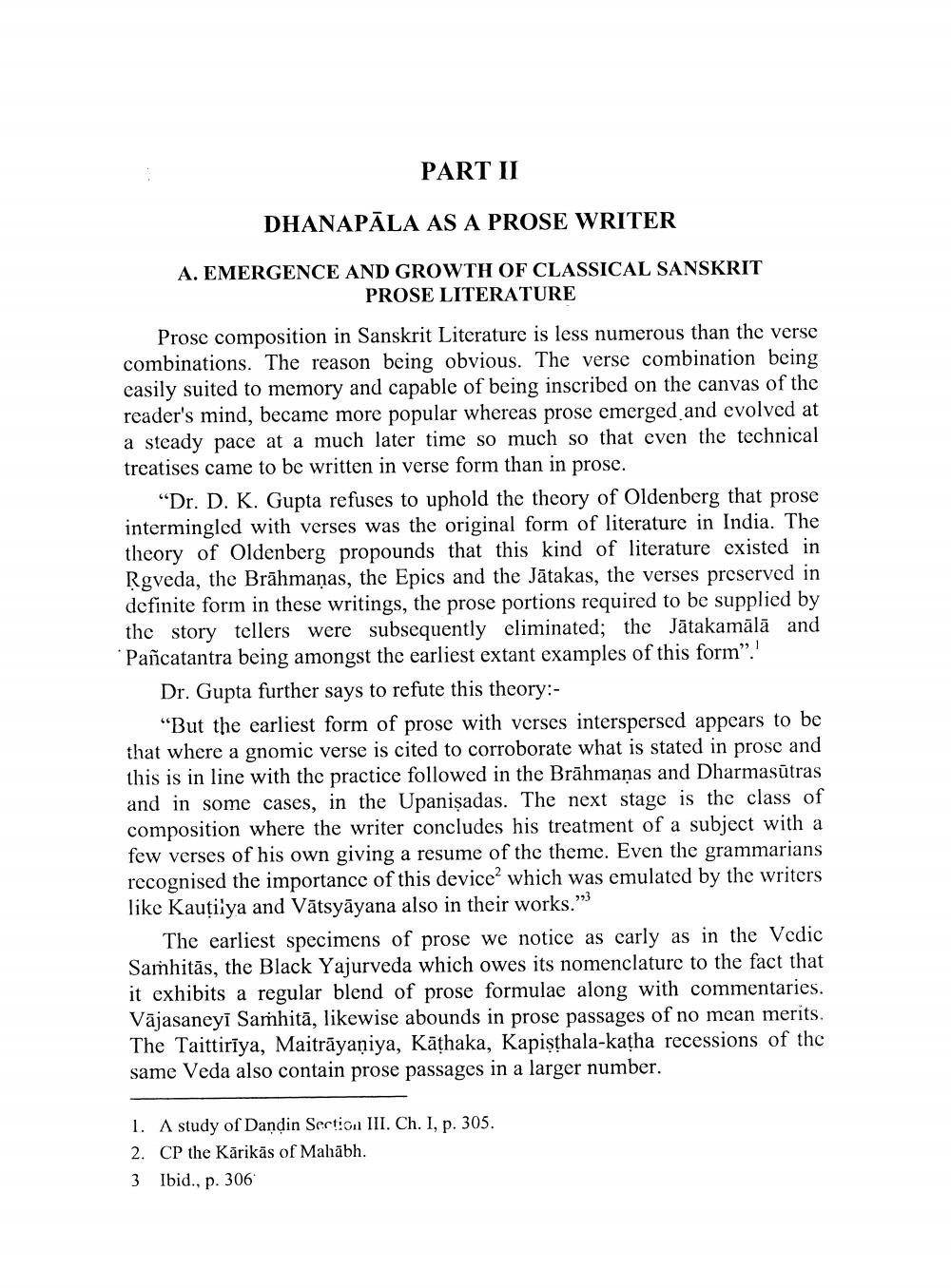________________
PART II
DHANAPĀLA AS A PROSE WRITER
A. EMERGENCE AND GROWTH OF CLASSICAL SANSKRIT
PROSE LITERATURE
Prose composition in Sanskrit Literature is less numerous than the verse combinations. The reason being obvious. The verse combination being easily suited to memory and capable of being inscribed on the canvas of the reader's mind, became more popular whereas prose emerged and evolved at a steady pace at a much later time so much so that even the technical treatises came to be written in verse form than in prose.
“Dr. D. K. Gupta refuses to uphold the theory of Oldenberg that prose intermingled with verses was the original form of literature in India. The theory of Oldenberg propounds that this kind of literature existed in Rgveda, the Brāhmaṇas, the Epics and the Jātakas, the verses preserved in definite form in these writings, the prose portions required to be supplied by the story tellers were subsequently eliminated; the Jātakamālā and * Pancatantra being amongst the earliest extant examples of this form”.
Dr. Gupta further says to refute this theory:
“But the earliest form of prose with verses interspersed appears to be that where a gnomic verse is cited to corroborate what is stated in prose and this is in line with the practice followed in the Brāhmaṇas and Dharmasūtras and in some cases, in the Upanişadas. The next stage is the class of composition where the writer concludes his treatment of a subject with a few verses of his own giving a resume of the theme. Even the grammarians recognised the importance of this device which was emulated by the writers like Kautilya and Vātsyāyana also in their works.""
The earliest specimens of prose we notice as early as in the Vedic Samhitās, the Black Yajurveda which owes its nomenclature to the fact that it exhibits a regular blend of prose formulae along with commentaries. Vājasaneyi Saṁhitā, likewise abounds in prose passages of no mean merits. The Taittirīya, Maitrāyaṇiya, Kāthaka, Kapisthala-katha recessions of the same Veda also contain prose passages in a larger number.
1. A study of Dandin Section III. Ch. I, p. 305. 2. CP the Kārikäs of Mahābh. 3 Ibid., p. 306




